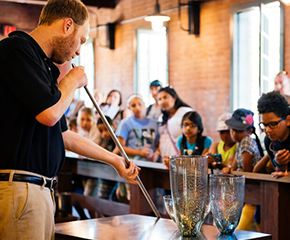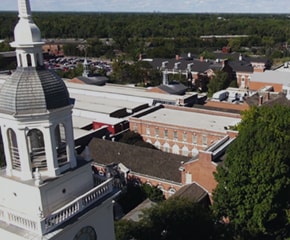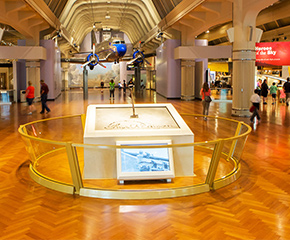Death Mask of Nikola Tesla on Pedestal, 1943
Add to SetSummary
Nikola Tesla (1856-1943) is one of the greatest figures in the history of electrical power and telecommunications. His alternating current induction motor and pioneering work with polyphase electricity were fundamental to the development of today's electric power grid systems. This death mask, made of electroplated copper, was created at the request of Hugo Gernsback -- a publisher, writer, and friend of Tesla. …
Nikola Tesla (1856-1943) is one of the greatest figures in the history of electrical power and telecommunications. His alternating current induction motor and pioneering work with polyphase electricity were fundamental to the development of today's electric power grid systems. This death mask, made of electroplated copper, was created at the request of Hugo Gernsback -- a publisher, writer, and friend of Tesla.
In the era before photography, masks--cast from molds taken directly from an individual's face or hands--were a means of making a portrait without resorting to the services (and perhaps shortcomings) of an artist. By the mid-twentieth century it was far easier to make a photographic portrait than to go to the trouble of making a mask. The detailed and lifelike quality of masks--taken from living or recently deceased individuals--ensured the survival of the process.
This copper mask captures the likeness of electrical pioneer and experimenter Nikola Tesla. It was made immediately upon the latter's death in 1943, at the request of publisher and writer Hugo Gernsback, a friend of Tesla's.
Nikola Tesla (1856-1943) is one of the greatest figures in the history of electrical power and telecommunications. His alternating current induction motor and pioneering work with polyphase electricity were fundamental to the development of today's electric power grid systems. Tesla's achievements, as well as his visionary and provocative ideas, resonated with the futuristically inclined Hugo Gernsback--who, in turn, fanned the public's interest via magazines such as Amazing Stories, Electric Experimenter, and Science and Invention. Gernsback's immense respect for Tesla and his achievements, and his eagerness to preserve his memory, led to the making of this mask.
The mask is made of multiple layers of electroplated copper--a fitting process given Tesla's role as an innovator in the world of electricity. The plating process would have been begun using a thin layer of powdered copper, mixed with beeswax, spread on the surface of a mold taken from Tesla's face. This layer of copper would have been enough to conduct electricity and begin the build up of successive layers. The finished form was then provided with a backing of plaster for strength, and a post to allow its mounting on a plinth.
The mask's pedestal, designed by sculptor Onorio Ruotolo, depicts Tesla's Wardenclyffe power transmission tower, his first AC induction motor, and a Tesla coil complete with looped electrical discharges. Gernsback displayed the mask close at hand, in his office. It was donated to The Henry Ford by Harvey Gernsback in 1968, following his father's death the previous year.
Artifact
Death mask
Date Made
1943
Subject Date
07 January 1943
Creators
Creator Notes
Mask and pedestal commissioned by Hugo Gernsback; pedestal designed by American sculptor Onorio Ruotolo
Keywords

On Exhibit
at Henry Ford Museum in Made in America
Object ID
68.4.1
Credit
From the Collections of The Henry Ford. In Memory of Hugo Gernsback.
Material
Copper (Metal)
Composite material
Copper (Metal)
Marble (Rock)
Plaster of Paris
Technique
Casting (Process)
Electroplating
Plating (Metal coating)
Color
Grayish reddish orange
Dimensions
Height: 22.75 in (overall; base and head)
Width: 11.5 in
Depth: 11.31 in
Weight: 53 lbs (Base alone weighs 40lbs)
Inscriptions
Lettering on the front of pedestal: DEATH MASK / OF / NIKOLA TESLA / 1859-1943





